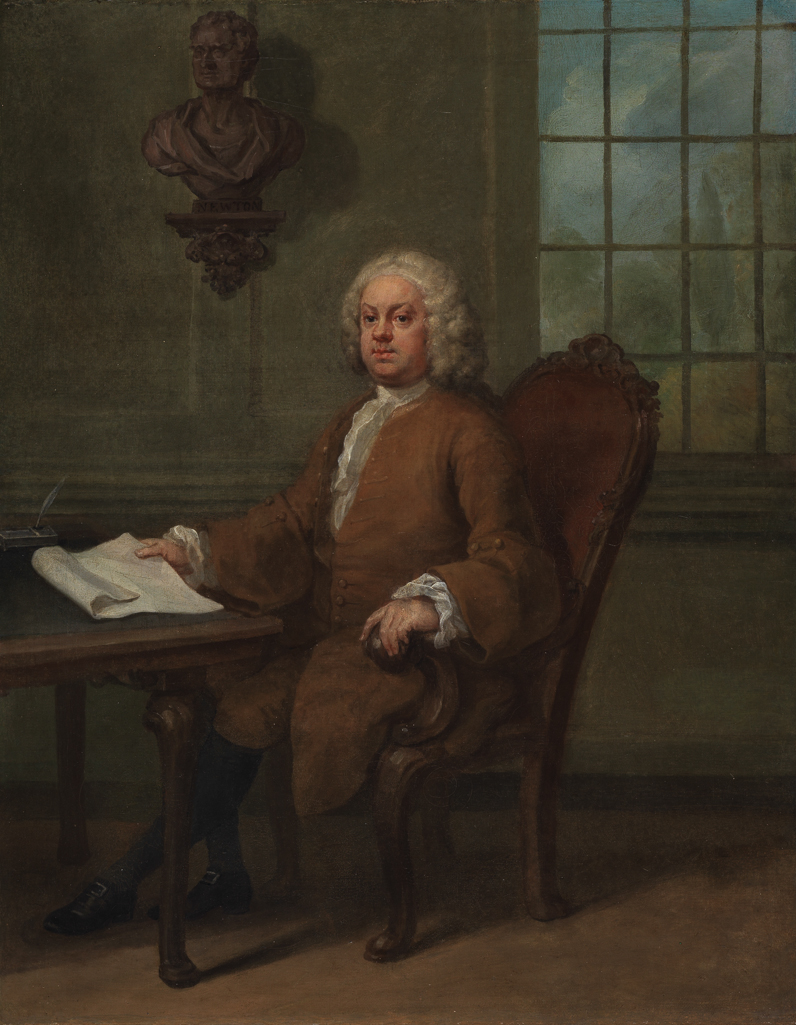Sir Isaac Newton
I do not know what I may appear to the world; but to myself I seem to have been only like a boy playing on the seashore, and diverting myself in now and then finding a smoother pebble or a prettier shell than ordinary, whilst the great ocean of truth lay all undiscovered before me.

In this famous quotation, Sir Isaac Newton (1642–1727) modestly describes his contribution to the history of science. His words contrast sharply with the sentiments expressed in the painting by Pittoni and the Valeriani brothers in which the great scientist is virtually canonised. His influence was pervasive: in William Hogarth's 1730s portrait of Dr Benjamin Hoadly in the Fitzwilliam [648] above, a bust of Newton is seen above this bishop and politician. A medal in the Fitzwilliam [DI.0044] depicting Newton was struck in 1726, the year before his death.
Having being bought up in rural Lincolnshire, Newton became an undergraduate at Trinity College, Cambridge. But the most siginificant period of his youth was during the plague years, 1665–1667, when the University was closed and he was able to experiment on his own, in his home-town of Woolsthorpe. It was during this remarkably fruitful period that he developed his theories on gravity and light.
In 1667 he returned to Cambridge, where he replaced his mentor, Isaac Barrow, as the University's Lucasian Professor of Mathematics. In 1668, his manufacture of a reflecting telescope began to bring Newton fame outside the quadrangles of Cambridge. In 1689, when he became the University's Member of Parliament, he moved to London.
By then he had already published his first important work, Philosophiae Naturalis Principia Mathematica (1687), a mathematical account of the universe, in which he revealed his laws of motion and gravitation. This was followed in 1704 by his Opticks. Newton's dominance of scientific study within Britain was recognised in 1703 when he was voted President of the Royal Society, England's academy of science, which had been founded in 1660. He was knighted in 1705.
Though hostile to the doctrines of the Roman Catholic church, Newton was a devout believer in God as a creative force within the the universe, and indeed in the 1670s much of his time was devoted to the study of theology and the history of the church.
He was buried in London's Westminster Abbey, an elaborate tomb completed for him in 1731 by the Flemish sculptor Michael Rysbrack. Closer to the Fitzwilliam, in Newton's old Cambridge college, Trinity, he is memorialised in a statue by Louis-François Roubiliac, left, which today stands facing the altar in the fifteenth-century chapel.
The Fitzwilliam owns a copy of his deathmask.
Other highlight objects you might like
Other pathways and stories you might like
Sign up to our emails
Be the first to hear about our news, exhibitions, events and more…






